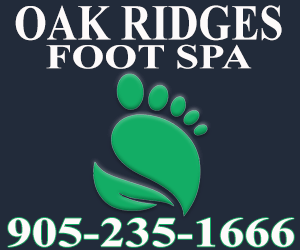D
Dr. Rachel Tavel PT, DPT, CSCS
Guest
Dr. Rachel Tavel PT, DPT, CSCS
April 14, 2025 at 3:55 PM
Turn Up The Burn With This Muscle Activation Trick Viktor_Gladkov
"Hearst Magazines and Yahoo may earn commission or revenue on some items through these links."
Still dealing with a tight hip or weak glute—despite all the foam rolling, stretching, and strengthening? Or, maybe you’ve had an injury that keeps flaring up, even though you thought it was finally behind you? If any of this sounds familiar, it might be time to try something different.
Enter: Muscle Activation Techniques (MAT)—a specialized, hands-on method that aims to turn “off” muscles back “on” so your body can move and feel better. Instead of just treating the symptoms, MAT is designed to fix muscle imbalances that mess with your movement and can lead to nagging aches and pains.
Many trainers and physical therapists are big fans of MAT (which is a registered and trademarked approach) because it can help clients move more efficiently, feel stronger, and avoid future injuries. But does it really deliver? Ahead, MAT-certified experts Jennifer Schwartz, CPT, and Charles Lantz, CPT, break down what MAT is, how it differs from traditional physical therapy or stretching, and why it could be exactly what your body’s been craving.
Meet the experts: Jennifer Schwartz, CPT, MAT specialist, is an exercise physiologist and founder of Impact Your Fitness studio and Think Fit. Be Fit. podcast network. Charles Lantz, CPT, MAT specialist, is the owner of Axis Muscle Activation clinic.
What is Muscle Activation Technique?
With so many fitness fixes out there—stretching, massaging, foam rolling—you might be wondering what makes MAT different. The short answer is that, unlike the methods mentioned above, the goal of MAT is not just to undo or fix the tightness or soreness. MAT supposedly looks for the deeper reason your body’s feeling off—like muscles that aren’t pulling their weight—and helps turn them back on, so to speak.
“MAT is based on the idea that tightness and pain are the body's way of protecting itself,” says Schwartz. When a muscle isn’t doing its job, your body starts recruiting other muscles to pick up the slack, which can cause stiffness, limited movement, or pain, according to Schwartz. stability. Over time, these compensations can lead to restricted movement, joint stress, and pain.” So what feels like a tight hamstring might actually be a weak glute—or another muscle that’s checked out.
The technique was developed by biomechanics expert Greg Roskopf to fix these kinds of issues. However, similar techniques (such as neuromuscular activation and proprioceptive neuromuscular facilitation) are also used by physical therapists and neurologists to help everyone from an athlete recovering from a sports injury to a stroke patient recover improve their muscle recruitment and function.
In essence, MAT is a patented version of a technique physical therapists use all the time. However, since trainers can't use techniques like this without proper medical training, MAT certifications allow them to safely and legally apply these muscle activation techniques within their scope of practice, helping clients improve muscular function, address imbalances, and reduce injury risk—without crossing into the territory of physical therapy.
The first step in the MAT process involves a certified practitioner testing how well your muscles are firing. Next, gentle, hands-on techniques are used to get lagging muscles back in the game. “By reactivating those underperforming muscles, MAT can help your body move with more ease, strength, and coordination,” says Lantz.
When we say a muscle is “underperforming” or “off,” what we really mean is that communication between the nervous system (your brain) and your muscles is impaired. Sometimes it’s not as simple as a muscle being weak; a technique to help improve that connection between the brain and the muscles is often needed to improve muscle recruitment before improving strength. MAT aims to help facilitate or improve that communication between the nervous system and the muscles so that your muscles can fire (or turn “on”) more effectively.
Research on neuromuscular activation supports this approach, showing that improving muscle function can enhance movement efficiency and reduce pain. Instead of treating the symptoms (like soreness or stiffness), MAT aims to fix the cause, helping you move better, avoid injuries, and feel stronger for the long haul. It’s not just for pro athletes—this technique is gaining popularity among everyday exercisers who want to feel more balanced, stable, and pain-free.
How does Muscle Activation Technique actually work?
A typical MAT session begins with a one-on-one assessment. Your practitioner will guide you through simple movement assessments that isolate each muscle to determine the range of motion at a specific joint (also known as a technique used by physical therapists called manual muscle testing). This will help determine which muscles aren’t firing properly. What makes MAT different is that it focuses on spotting and correcting recruitment of the muscle fibers through that brain-muscle connection—not just treating tightness or pain, according to Lantz.
Once they pinpoint the underactive muscles, your specialist uses gentle pressure and palpation techniques to improve sensory information to the muscle via the peripheral nervous system, followed by small, targeted isometric muscle contractions (you’ll be holding a muscle in place without moving) to help “wake up” those muscles and get them firing again via the central nervous system.
It’s not like traditional massage or stretching, which target the tissue directly and not the brain-to-tissue connection, according to Lantz. MAT goes deeper, helping the connections between brain and body to create more efficient muscle activation. “We’re actually trying to re-establish the brain-to-muscle connection and improve how your body stabilizes itself.” When that connection is impaired, muscles can become weak and less efficient over time, but with the right hands-on techniques, the connection can be restored.
For example, when you are lying down and you try to bring your knee to your chest, maybe it doesn’t go all the way. This might seem like it is weak or your mobility is limited. After it is determined that this joint range of motion is not at 100 percent, a MAT practitioner might apply resistance to your knee as you try to bring the knee closer to your chest. You’ll hold the position, and match the resistance without moving, then relax. After several repetitions of this, a second assessment may show you’re able to achieve the full range of motion, but it’s not because your muscle instantly got stronger; it’s because your brain figured out a better way to connect and recruit more of the fibers within that muscle.
Schwartz, who works with everyone from high-level athletes to everyday movers, says MAT can be especially helpful if you’ve been struggling with lingering pain or constantly dealing with the same movement limitations. When the brain-muscle connection is impaired over time, this can turn into chronic weakness or pain that simply doing stretches or strengthening exercises cannot fix. But this pattern needs to be broken gradually. “The best candidates for MAT are people looking for a personalized, long-term solution—not a quick fix,” she says.
Both Schwartz and Lantz emphasize that MAT isn’t about temporary symptom relief—it’s about helping your body move better from the inside out. Whether you’re chasing performance goals or just want to stay active without nagging aches, MAT is designed to help your muscles function at their best so you can feel stronger, more stable, and more in control.
The Benefits Of Muscle Activation Technique
Unlike stretching (which may only offer temporary relief, according to a 2021 study in European Journal of Applied Physiology), MAT gets to the why behind your body’s aches and tight spots. It helps reactivate muscles that have gone “offline” so your body can work the way it’s supposed to. “By improving muscle function, MAT helps create lasting strength and stability,” says Lantz.
1. It helps weak muscles get back to work. MAT pinpoints which muscles aren’t pulling their weight and helps switch them back on. When your nervous system isn’t fully activating a muscle, your body starts to compensate, according to Schwartz. That’s how imbalances—and eventually pain—develop. By reactivating those sleepy muscles, which the MAT technique accomplishes, you’ll move with more strength and support.
2. It can boost your mobility and control. Feeling stiff? It could be your body trying to protect an unstable spot. “Tightness is often the body’s response to weakness,” says Schwartz. MAT helps fix the real issue—underactive muscles—so your body can loosen up without losing control.
3. It can ease chronic pain. Pain doesn’t always come from overdoing it—sometimes it’s your body’s way of signaling underlying muscle dysfunction, according to Schwartz. “When muscles aren’t doing their job, joints and other tissues take on extra strain,” she says. MAT helps relieve that pressure, so your body can move without hurting.
4. It lowers your risk of injuries. By correcting muscle imbalances, MAT helps your body move more efficiently and safely, which means you’re less likely to tweak something during a workout—or just walking around in daily life, says Lantz.
5. It can help you perform better during workouts. Neuromuscular reactivation techniques such as MAT can significantly enhance muscle responsiveness and reduce injury rates in athletes, according to a 2022 study in Journal of Sports Science & Medicine. When your muscles are working like they should, you’ll feel more powerful and bounce back faster, according to Lantz.
Want to try a DIY trick at home? Instead of immediately stretching a tight muscle, try gently engaging the opposite one first. For example, if your hamstring feels tight, try flexing your quad before you stretch. It’s a small shift, but it can make a big difference in how your body responds.
Is Muscle Activation Technique right for you?
If you’ve been dealing with muscle tightness that won’t go away, feel off-balance during workouts, or notice pain that keeps coming back, MAT might be exactly what your body needs. It’s especially helpful for active folks, regular exercisers, or anyone recovering from an injury and looking to move better, without pain.
That said, it’s not for everyone. “MAT is generally safe,” says Lantz, “but it’s not the right fit for people with acute injuries, major inflammation, or certain neurological conditions.” Some people feel better after just a few sessions, but for lasting results, consistency is key.
You might benefit from MAT if you:
Are active and want to optimize performance and prevent injuries
Have tight muscles that won’t loosen up, even with stretching
Are recovering from an injury or surgery that left you feeling imbalanced
Struggle with stability or mobility during workouts or daily movement
MAT might not be a fit if you:
Have a fresh injury or severe inflammation
Just had surgery and aren’t yet cleared for hands-on therapy
Have a progressive neurological condition (like ALS or Alzheimer’s)
Are in severe or unexplained pain (consult a doctor first)
Since MAT is a specialized technique, it’s important to work with someone certified in the method. Sessions usually cost between $75 and $150, depending on your location and the length of the session. Insurance may or may not cover it, so it’s worth checking ahead of time. You can find a certified provider at muscleactivation.com or by searching for a MAT specialist near you.
You Might Also Like



























































































